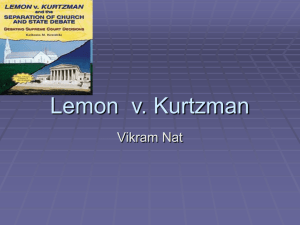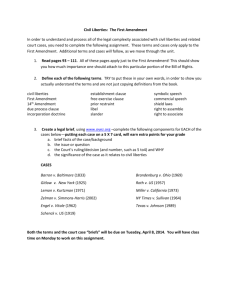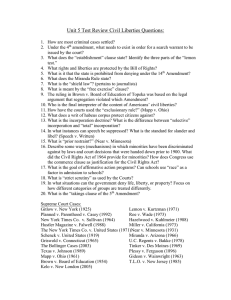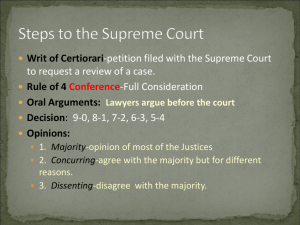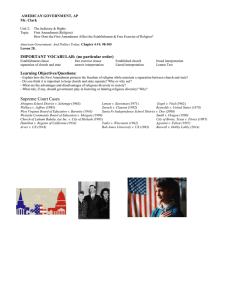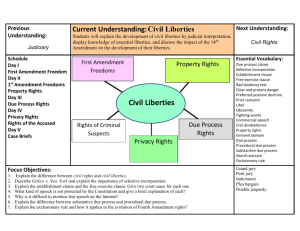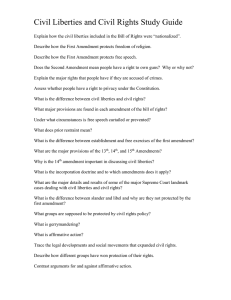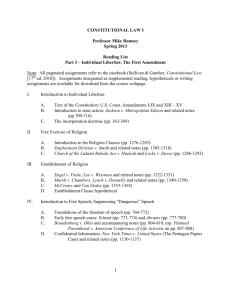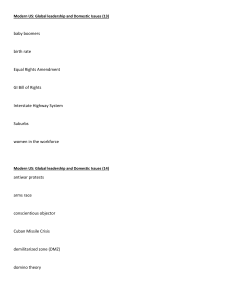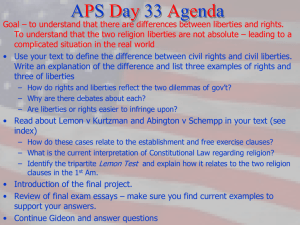Chapter 4 Reading (98-120)
advertisement
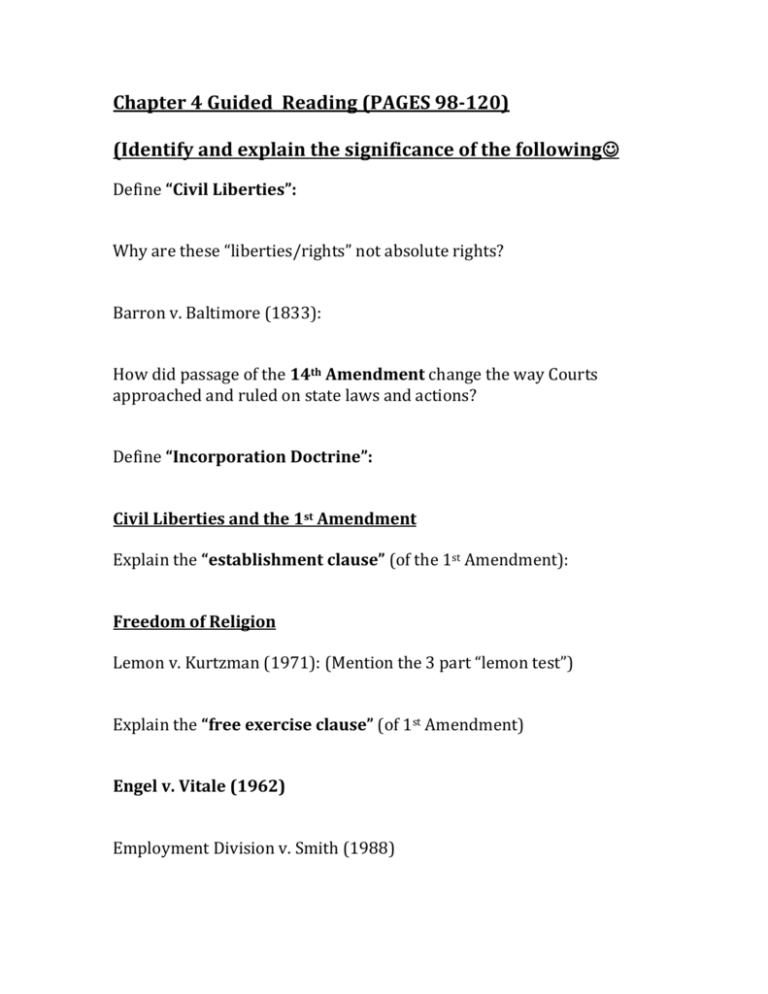
Chapter 4 Guided Reading (PAGES 98-120) (Identify and explain the significance of the following Define “Civil Liberties”: Why are these “liberties/rights” not absolute rights? Barron v. Baltimore (1833): How did passage of the 14th Amendment change the way Courts approached and ruled on state laws and actions? Define “Incorporation Doctrine”: Civil Liberties and the 1st Amendment Explain the “establishment clause” (of the 1st Amendment): Freedom of Religion Lemon v. Kurtzman (1971): (Mention the 3 part “lemon test”) Explain the “free exercise clause” (of 1st Amendment) Engel v. Vitale (1962) Employment Division v. Smith (1988) Freedom of Expression Define “prior restraint” Near v. Minnesota (1931) Freedom of the Press: Obscenity Cases: Miller v. California (1973) Libel and Slander New York Times v. Sullivan (1964) CHAPTER 4 READING (PAGES 120-136) Directions: Explain the significance of the following. Define “probable cause”: Mapp v. Ohio (1961): USA Patriot Act (2001): Miranda v. Arizona (1966): Gideon v. Wainright (1963): Gregg v. Georgia (1976): Roe v. Wade (1973): Planned Parenthood v. Casey (1992)
